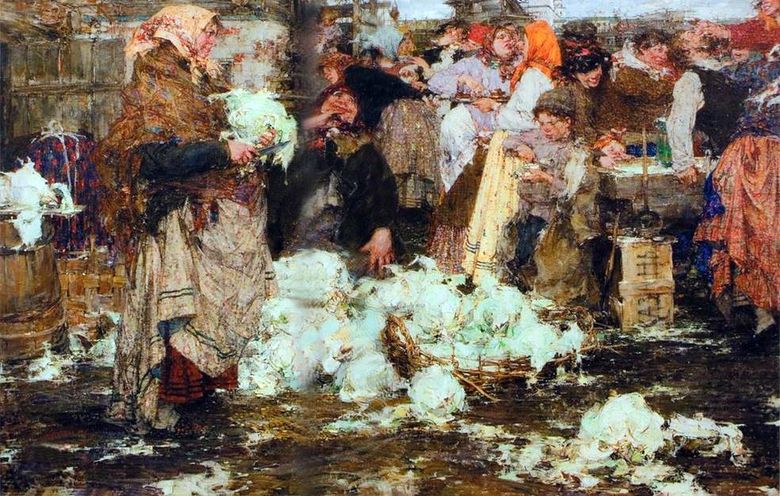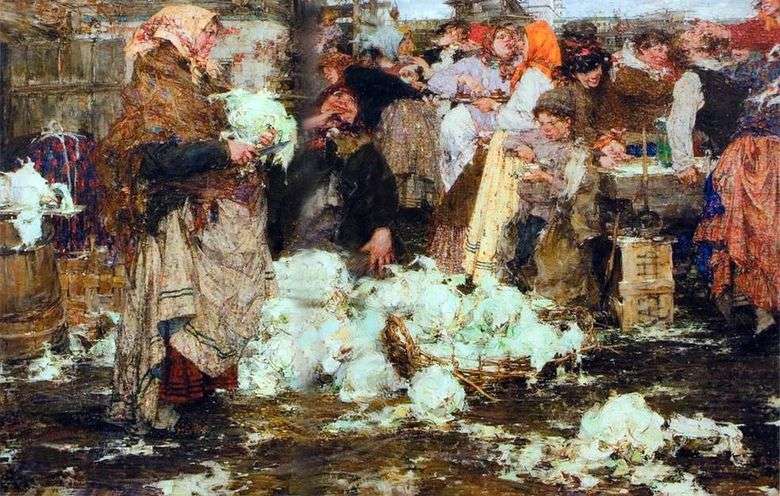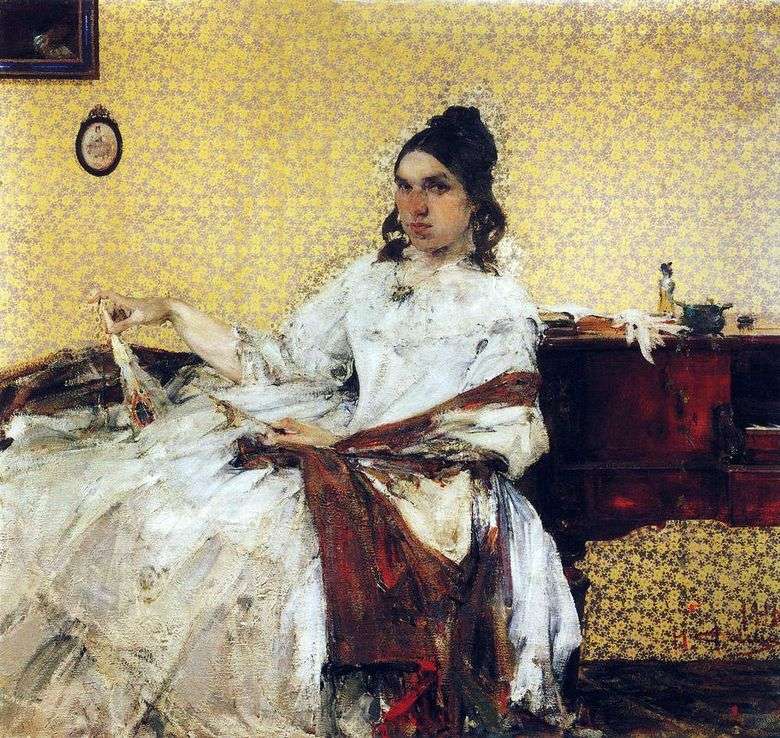
“Cabbage” – the final competitive work of Nikolai Feshin, after writing which in 1909 he officially received the title of artist.
The plot of the canvas was a daily scene from the life of the peasants – the annual salting of cabbage for the winter on Vozdvizhenie. The painting was preceded by a lengthy preparatory work in the village of Pushkarka near Arzamas, where the artist studied village types.
Fresh cabbage. A large pile lies in the middle of the yard. A full woman is sitting next to her, preparing to start work. To the left is another woman, with a vegetable and a knife in her hands. On the contrary – the boy, carefully cutting the last sheets from the head. A little farther behind him, you can see how several women together prepare cabbages in a large trough. Immediately, among the crowd, a hot, stout, flushed girl spreads to the people. Warmly dressed in this cold morning, united by common labor, the peasants rejoice and have fun, passing the festive mood to the viewers of the picture.
Despite the fact that all the characters depicted on the canvas are occupied by one thing, each of them is individual. This can be traced in the expressions of persons, poses, movements, features of the warehouse of the figure. Each of the images is equally important for the artist, the main human character is not here. The center and the meaning-forming link of the canvas is a pile of ripe and ready-to-eat heads.
The picture is a cold color, and only juicy, bright green spots of cabbage leaves stand out sharply against the dark background of clothes and fresh earth.
Show everyday with its simple joys and sorrows, discover the beauty of the world in the usual things and moments of life – this saw N. Feshin the main task of genre painting. And the work “Cabbage” serves as an excellent example of the artist’s solution of this task.
 Kapustnitsa – Nikolay Feshin
Kapustnitsa – Nikolay Feshin Cheremis wedding by Nikolay Feshin
Cheremis wedding by Nikolay Feshin Portrait of N. Sapozhnikova by Nikolay Feshin
Portrait of N. Sapozhnikova by Nikolay Feshin Portrait of Vary Adoratskaya by Nikolay Feshin
Portrait of Vary Adoratskaya by Nikolay Feshin Kapustnitsa – Nikolay Feshin
Kapustnitsa – Nikolay Feshin Portrait of the father by Nikolay Feshin
Portrait of the father by Nikolay Feshin Portrait of Tatiana Popova by Nikolay Feshin
Portrait of Tatiana Popova by Nikolay Feshin Retrato de N. M. Sapozhnikova – Nikolay Feshin
Retrato de N. M. Sapozhnikova – Nikolay Feshin